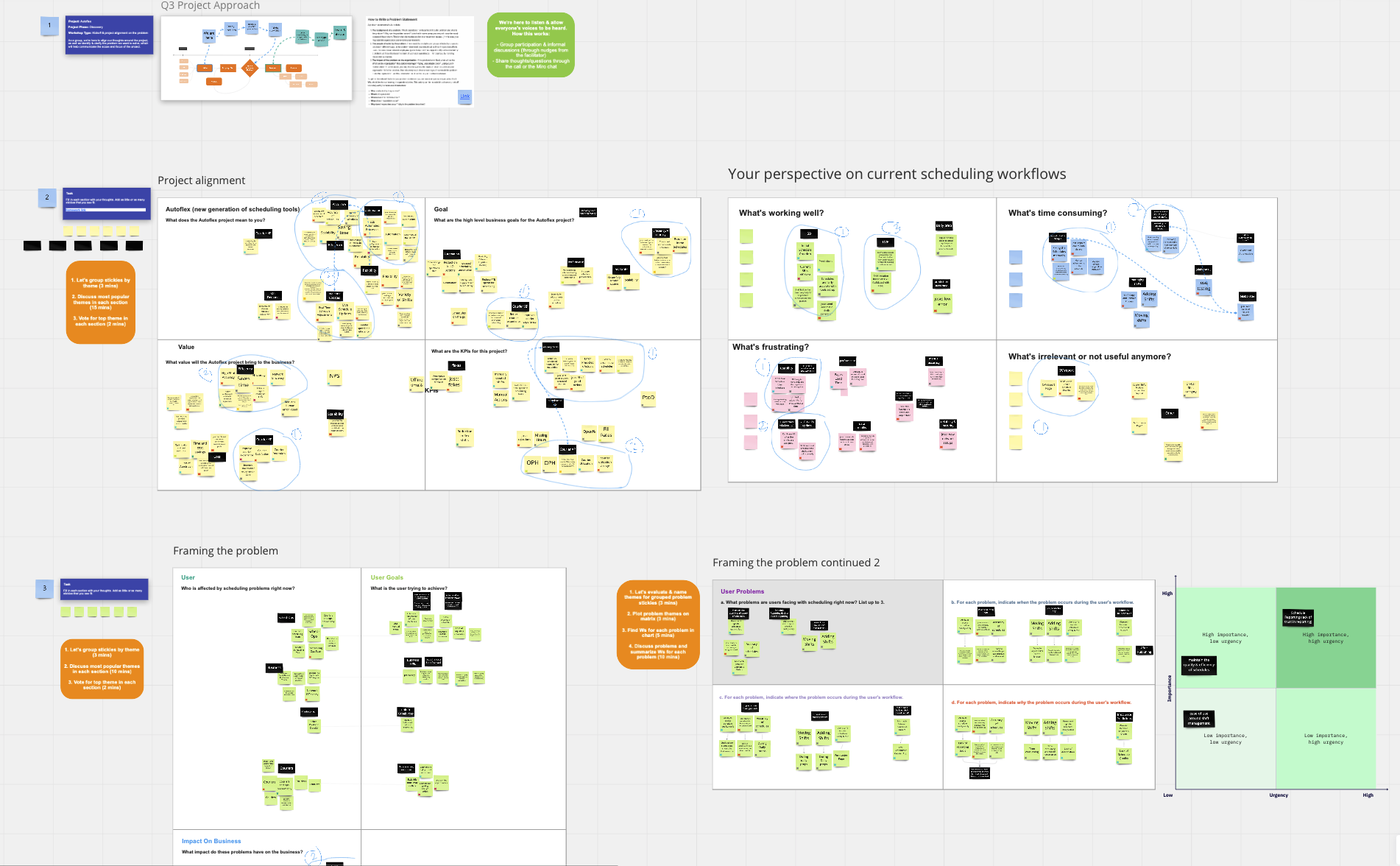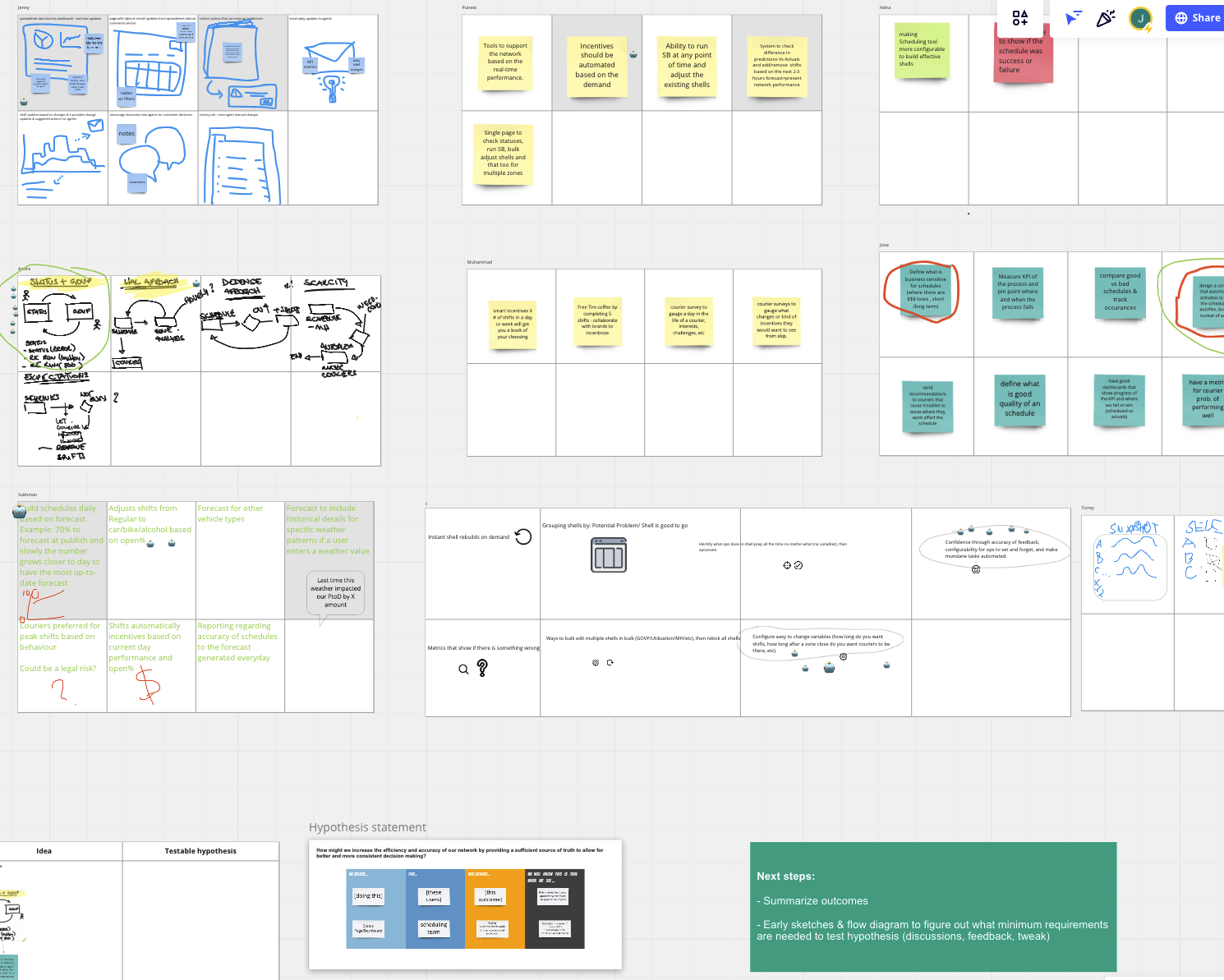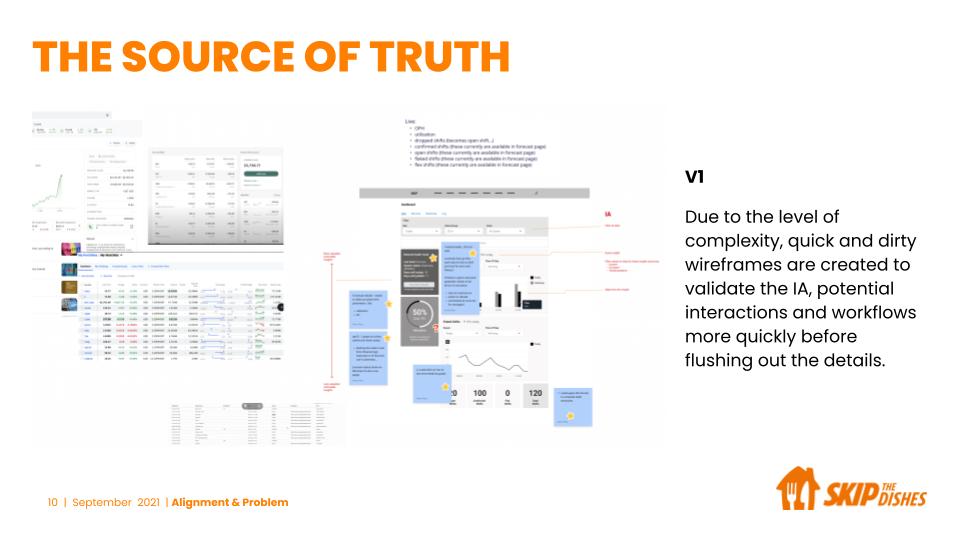Case Study: SkipTheDishes UX Hypothesis Workshop
Project Overview
| Role | UX Designer |
| Description | Running a UX hypothesis creation workshop with product and tech. |
| Problem To Solve For | Identifying more efficient ways to run operations for better scheduling accuracy. |
| Goal | Defining a hypothesis that's used towards designing a prototype solution that can be user tested and validated. |
| Challenges | Educating the team on the purposes of a workshop, while acting as the workshop facilitator as well. |
| Learnings | Learnings for next time was to either have 2 parts to a workshop or reduce the number of activities. |
| Tool(s) | Miro |
Process
Below is a sample of the discovery process I ran with a cross-functional team for new projects. My process changes and adapts depending on the type of project, level of complexity, and what stage the product is at (ie. new product vs. building on an existing product).
For this case study, there was a desire to explore automation and how best to apply it towards an internal tool. As this was a new concept, team alignment was necessary to better understand the problem we wanted to solve and how best to approach it.

1. Project kick-off to reach alignment as a team
Team members ranged from product manager, product owner, tech manager, developer, data science and operations. The workshop aimed to satisfy the following:
- Shared understanding of what we perceive the project to be about
- Align on what the business goals and user value is with this project
- Align on how we think we can measure success of this project

2. Aligning around the problem
Once the context and the goal of the project is understood, discussions and voting were had to help frame and prioritize the problem through the user's perspective.
- Understand user goals, pain points, and needs
- Examine why these pain points occur
- Prioritize the urgency and importance of addressing these pain points
- Establish a problem statement to focus on during the course of the project

3. Ideating and creating a hypothesis to test
Next, the problem statement is converted into a HMW question to ideate for.
- Everyone comes up with a few ideas through the braindump technique
- Sharing, discussing, grouping and voting are done to narrow down on viable solutions
- Hypothesis statement is created based on the problem statement we want to solve for and what solution we think can resolve the problem

4. Documentation of workshop outcomes
Through the use of Confluence, documentation is created to for one source of truth. Product and tech were able to access the same information in one place.
- Figma file links and notes were provided for quick access

5. Sharing our product and design collaboration process with the wider product and design department
As the project moved forward, the product manager and I put together a slide deck to present back to our respective departments to help promote more cross-functional collaboration between different teams.